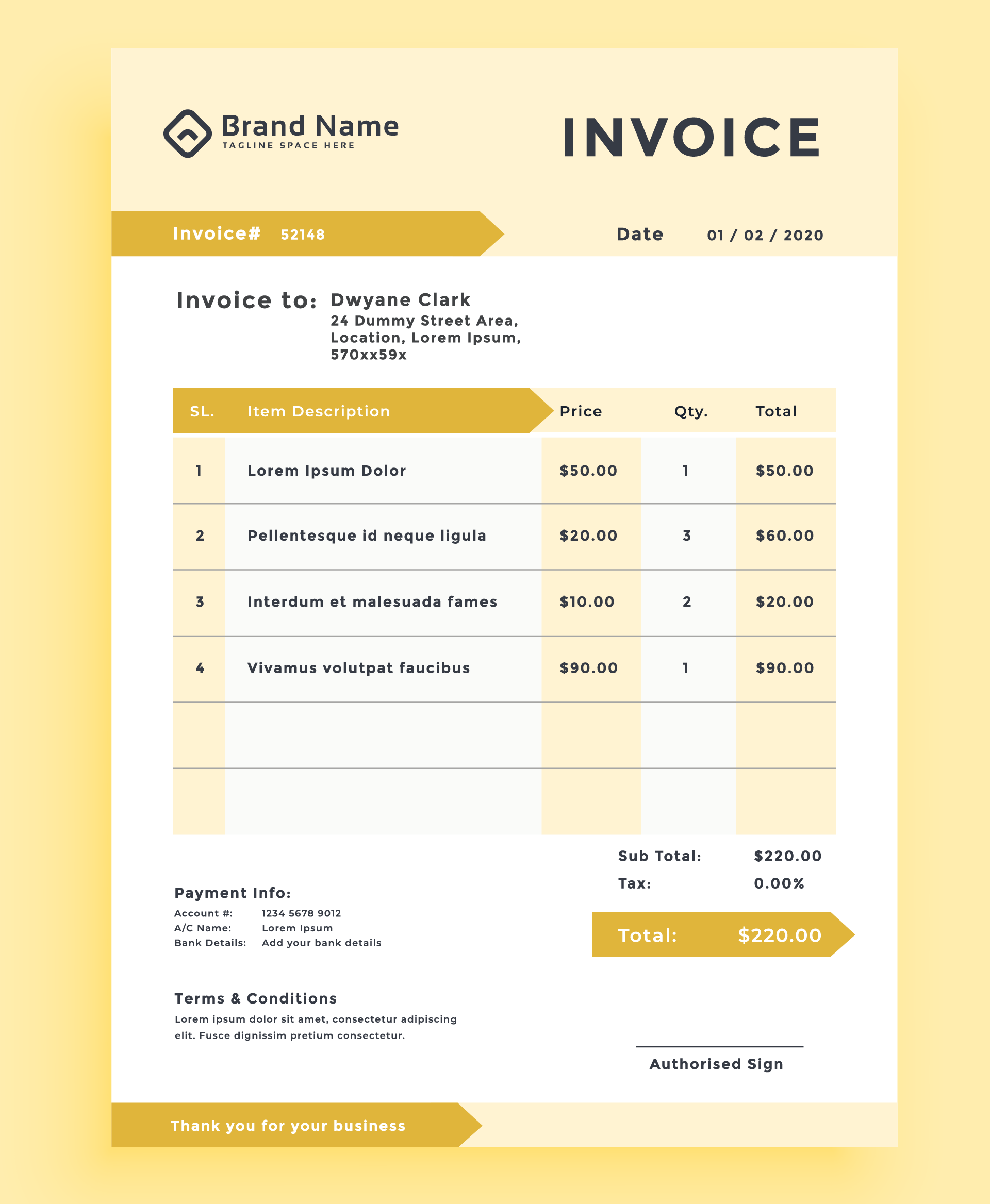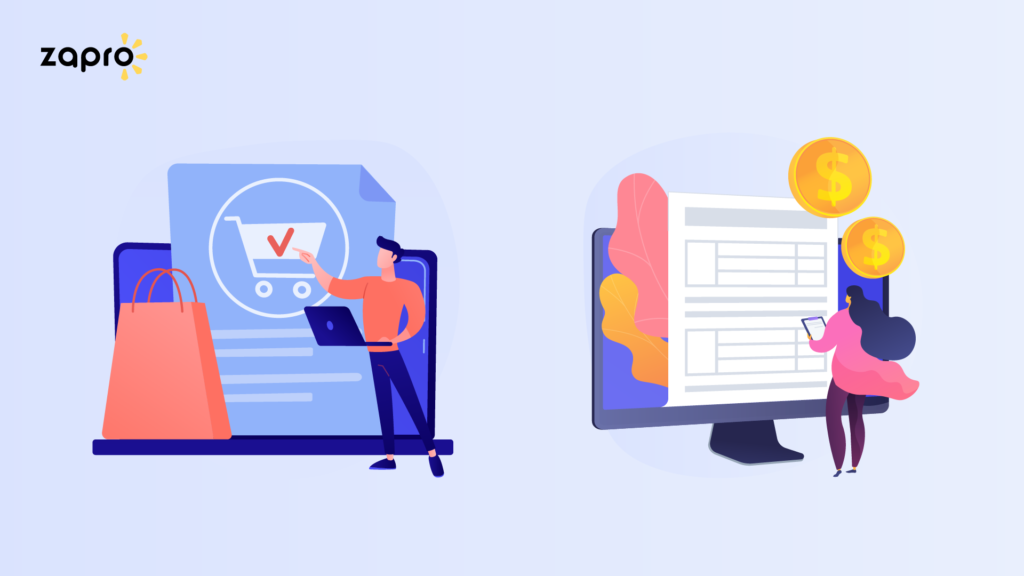The terms’ Purchase Order’ and ‘Invoice’ are frequently used not only during the procurement process but at the very grassroots of a business’s activities.Â
Despite being widely used terms, unfortunately, for many companies, their employees remain unclear when asked, “What is a purchase order?” or how it functionally differs from an invoice.Â
Exploring the critical differences between purchase orders vs. invoices can help your employees understand once and for all how both aspects are integral in reducing organizational overspending.Â
This article aims to help readers who incorrectly use these terms understand what critical aspects of the purchasing process they encompass and how they differ.Â
This exploration into purchase order vs. invoice isn’t to determine which is better amongst the two but to illuminate how leveraging them together can streamline an enterprise’s purchasing process.Â
In this article we will explore the following topics:
- What is a purchase order?
- What is an invoice?
- Key differences between purchase order and invoice
- Similarities between purchase order and invoice
- Why companies need both purchase orders and invoice
- The importance of automating purchase orders and invoice
- Automate procurement with Zapro
Purchase order vs. invoice
Simply put, a purchase order (PO) is a document that a business’s procurement group or department sends to a vendor/supplier to purchase its goods or services. The purchase order is used to manage and keep tabs on purchases.Â
On the other hand, an invoice is a payment request document a seller sends directly to the buyer after it fulfills the delivery of a product or service.
What is a purchase order?
For the sake of understanding, imagine a scenario where your business’s HR department requires five new chairs to facilitate the new members added to its team.Â
Your procurement department would have to initiate the purchase of the chairs by sending a purchase order to an appropriate supplier.Â
When this happens, this purchase order becomes a legally binding contract between your business and the vendor/supplier as soon as they receive, review, and accept its terms.Â
What does a purchase order contain?
As a good practice, all purchase order forms must be sequential, with the purchase order number acting as a unique identifier for that particular set of goods or services. With that as a fundamental basis, a standard purchase order may also contain the following information:
- Items DescriptionÂ
- ModelÂ
- Product numberÂ
- Purchaser contact informationÂ
- Seller contact informationÂ
- Item’s unit priceÂ
- Quantity
- Billing addressÂ
- Shipping addressÂ
- Delivery timeframes
- Payment terms
- Issuer’s signature

Why do companies need a purchase order?
Here are some reasons companies need a purchase order:
Now that we know what is a purchase order and why companies need it, let us dive into what comes next, the invoice.
What is an invoice?
An invoice is a commercial document a supplier/vendor issues to a buyer to request payment for goods or services supplied. When an invoice is created and sent, its status remains open until the buyer acknowledges the pre-agreed payment terms and pays for the item.Â
What does an invoice contain?
A typical purchase invoice contains the following information:
- Invoice number
- Purchase Order number
- Order date
- Item name
- Item description
- Item number
- Item quantity
- Item unit price
- Item Total
- Purchase date
- Shipment date
- Shipping terms
- Payment terms
- Payment due date
- Delivery due date
- Applicable tax rate
- Applicable tax amount
- Delivery or Shipping costs
- Total Amount due
- Penalties and Discounts if applicable

Why Do Companies Need An Invoice?
Let us take a look at some of the reasons why companies need an invoice:
Key differences between a purchase order and an invoice
Some notable differences that make purchase orders and invoices stand apart are:
While the above is how purchase orders vs. invoice fare against each other in their purpose, they do have similarities that contribute to employees believing they serve the same functions.
Similarities between purchase orders and invoice
The fundamental similarity between purchase orders and invoices is that they both are legally binding purchasing documents that include the order description, payment information, shipping information, supplier details, unit price, and quantity.Â
Both are terms used for purchases and are essential in optimizing company spend and streamlining the purchasing process.Â
Why do companies need both purchase orders and invoice?
Once you explore the intricacies behind purchase orders vs. invoice, you will notice that despite their similarities and differences, they are essential purchasing functions that work in tandem to achieve higher business goals.Â
Purchase orders and invoices help clarify budgets, eliminate errors, enhance cash flow, streamline inventory management, establish spending controls, and prevent conflicts arising from complex purchasing processes. As they are well-documented records of a business transaction, fewer problems occur due to miscommunication.Â
They clearly define the expectations both the buyers and sellers have toward completing a business transaction. It is an absolute must for businesses to use to keep themselves protected from a legal standpoint.Â
Although generating an elaborate purchase order or invoice may be time-consuming, they are an excellent way to smoothen the purchasing process and build solid business relationships with suppliers and vendors.
The importance of automating purchase orders and invoice
Creating, tracking, and managing purchase orders and invoices for small businesses may be relatively easy as the business requirements, operational costs, and purchase volume will be less than that of larger enterprises. As companies grow, so does their active demand for more goods and services.Â
Here, the true challenge lies in creating accurate and error-free purchase orders and invoices for an exponentially high number of business transactions. To make things worse, manual purchase orders and invoice management also require significant storage space that can be a wasteful drain of resources.Â
The complexities introduced by manual purchase orders and invoice management can lead to duplicate orders, invoices, and overpayments.Â
On the other hand, automating purchase orders and invoicing will enable your business to seamlessly create, manage, and track a high volume of purchase orders and invoices with reduced clutter, minimal errors, and increased transactional visibility.Â
In such cases, automation eliminates tedious tasks such as manual paperwork, physical document storage, and data entry. Automating these tasks alone helps growing enterprises save considerable time and physical labor while dramatically decreasing wasteful organizational spending.
Apart from these benefits, automation also enables businesses to derive actionable data-driven insights through data analysis of purchase orders and invoices. It allows companies to analyze supplier performance, purchasing patterns, and payment trends.Â
Doing so will further enable them to enhance purchasing strategies, negotiate better deals, increase cost-savings, and boost the overall efficiency of the purchasing process.Â
These are just some ways businesses benefit from automating purchase orders and invoices.Â
Automate procurement with Zapro
Now that you understand the functions of the purchase order vs. invoice and the shortcomings of manual processes, the decision to transition to automation may be more straightforward.
Zapro is an automated procurement solution that can help you systemize the purchasing process by leveraging state-of-the-art automation tools to avoid unnecessary hassles during and after purchasing. Our supplier portal will enable your suppliers to collaboratively accept, reject, and request changes in purchase orders.
Moreover, when suppliers need to submit invoices, they can do so directly through Zapro’s supplier portal per legal and operational expectations. Ultimately, a robust solution such as Zapro can dramatically reduce the workload for the AP department, improve the invoice data quality, and lessen the chances of you facing hassles with your next audit.
Book a demo with us and learn how we can help you streamline your purchase order and invoice management.
